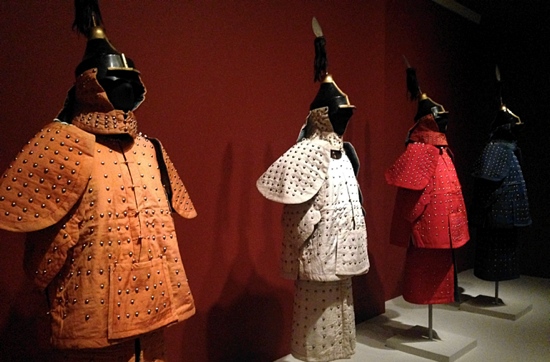Extended: VMFA unveils relics from the Forbidden City
Richmonders get a peek inside the Imperial Palace built in the Ming dynasty

Update #1 — January 5, 2015; 1:37 PM
The VMFA has announced that, due to the popularity of the Forbidden City exhibit, it shall be extended through Monday, January 19th. If you’ve had trouble getting over there, what with the holidays and all, now is your time to shine.
Reminder: you must purchase tickets at the box office or online for a specific time. We recommend doing it online, just as we recommend doing everything.
— ∮∮∮ —
Original — October 17, 2014
Over 200 artifacts from the Forbidden City will be exhibited at the Virginia Museum of Fine Arts starting tomorrow in Forbidden City: Imperial Treasures from the Palace Museum, Beijing, the first time the VMFA has exhibited Chinese art sourced directly from China.
The exhibit serves as the centerpiece in the VMFA’s seven-year relationship with the Palace Museum, the first collaboration forged between any US museum and its Beijing counterpart.1 Hardywood has even joined the mix by releasing a white ale with red dragon fruit called Forbidden2 to tie into the exhibit.

Ritual bells cast with dragons (dated 1713)
Built between 1406 and 1420, the Imperial Palace spanned both the Ming (1368-1644) and Qing (1644-1911) dynasties. Only the ruling emperor3 decided who could enter and leave the Imperial Palace (hence the Forbidden City name).
Enclosed by a 26-foot-high wall, the Forbidden City’s 900+ buildings spanned over 3,000 feet north-to-south and nearly 2,500 feet east-to-west.
Li Jian, the East Asian Art curator at the VMFA, said the new exhibit was designed so that visitors could simulate a walk through the grounds.
“The exhibition layout [is] based on the layout of the Forbidden City,” she said. That makes the VMFA exhibit unique. “I haven’t seen any [past Forbidden City] exhibition arranged like that.”
The first of the exhibit’s four sections represent the rituals of the Qing court and features roughly 90 objects depicting historic events. The next two sections show items (furniture, portraits, decorations) representing imperial prestige and various paintings depicting animals, landscapes, and figures featuring Qing dynasty symbolism.
The final section highlights religion, celebrated and recognized in the centermost portion of the city. Roughly 30 works (sculpture, thangkas, sutras, pagodas) showcase the Buddhist and Daoist beliefs spanning 500 years of Chinese history.

3D replica of the Forbidden City
The VMFA has also added modern technology into the exhibit. The museum mounted a scaled replica of the Forbidden City, created by 3D printers, onto a wall. Additionally, visitors may watch two 3D printers in the museum atrium create a second scaled replica for the duration of the exhibit.
Curator Li Jian, who traveled to China in 2010 to begin the process of cultivating the new exhibit, said China had a once “very open society.” That’s manifested in Forbidden City objects with Tibetan and Mongolian sensibilities, as well as Western artistic tastes that traveled with missionaries.4
Jian said embracing diversity is a central theme of the exhibit. “People can accommodate other cultures and learn from other cultures, and bend it and create it” to make your own culture better, she said. If the 15th Century Ming dynasty could do it, “we can definitely do it ourselves.”
She added: “We have so much to learn from the past.”

Two of the 16 Luohans (Buddhist deities) (circa 1777)
Forbidden City: Imperial Treasures from the Palace Museum, Beijing runs from October 18, 2014 to January 11, 2015. Tickets range from $10 – $20. The exhibition is free for museum members. The VMFA will hold several events related to the new exhibit in the coming weeks.
Related
- 3D printers building scaled Forbidden City models at VMFA; RVANews
- Missionary to the Forbidden City; New York Times
Photos by Nathan Cushing
-
Recommend this
on Facebook -

Report an error
-

Subscribe to our
Weekly Digest





There are no reader comments. Add yours.